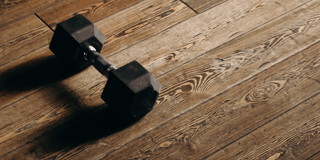
Strengthening these three areas helps you focus on winning.
How often does a driver say, “That race really took everything I had!” or “I feel hungover from X event weekend?” It likely wasn’t the alcohol.
Like any other sport, a racer’s workout regimen is crucial to his or her success. The competitive driving environment inflicts stress upon their bodies and requires a quick and consistent response to the competition conditions. Drivers must also think about their mental exhaustion and take steps to increase awareness and stamina during races to decrease fatigue. Experienced drivers show higher results in physical strength and quicker responses to common stimuli even outside of the car.
Quick Tip: Hydration is key before, during and after your event weekend. Especially on hot days, make sure you’re drinking AT LEAST one bottle of water every two hours.
When speaking with race participants, most physical exhaustion after a motorsport event is felt in the driver’s shoulders, core, and glutes. Studies show that isometric muscular activation in these areas from fighting against the gravitational forces for multiple hours and constant pedal work affect the drivers’ bodies and ultimately their ability. Focusing on these three main body groups during pre-event fitness can benefit any athlete. Let’s break it down into a few quick at home exercises for a full body workout:
Shoulders
When competing against a pack of other drivers or the clock, having stiff shoulders while handling the car will exhaust muscles in a driver’s upper body. The G forces experienced at any level of competition cause a natural response against the pressure the body feels due to external conditions during the competition. Working on shoulder strength increases opportunity on the track because of a more relaxed upper body that releases the tense grip a driver can have on the wheel. Lowering the chance of upper body fatigue allows a driver to put more time in the car and makes the recovery time faster after an event. Here is a quick shoulder workout to strengthen muscle groups in the upper body:
Half-kneeling shoulder press:
For this exercise:
- Kneel on your left leg, holding a dumbbell at shoulder-height in your right hand.
- Press the dumbbell upwards. Avoid leaning to the side or backwards to counter the weight.
- Once your arm is at full extension, lower the weight back down to shoulder height. Do all repetitions on one side before swapping over to the other side.
Core
In most sports, an athlete’s core is the foundation of strengthening the rest of the body to its full potential. When drivers are competing, they might not realize how hard they are flexing their torso. The ability to hold your body in place while making turns at high speeds will allow a driver to focus on competing instead of how long they can race before their body begins to get sore. Strengthening this area of drivers’ bodies will increase their performance and help them maintain their ability to react quickly with little body strain. This at-home abdominal exercise will begin the strengthening process:
Kneeling pallof press:
For this exercise:
- Assume a half kneeling position and attach a handle to a cable stack at chest height.
- Hold the handle to your chest and assume a hip width stance with one hip in flexion and the other in extension.
- Press the handle horizontally to extension as you exhale.
- Return to the starting position and repeat for the desired number of repetitions on both sides.
Glutes
Focusing on activation of a driver’s glutes will allow increased pedal response while driving. As mentioned earlier, there is constant strain on a driver’s lower body because of the back and forth between acceleration and braking throughout the race. Confidence during a race in the lower body because of stamina and strength helps a driver perform consistently through every challenge. Making this performance successful can be targeted by response time activation and the strength of a driver’s glutes. Here is a full body exercise that will heavily target the driver’s lower body:
Overhead squat
For this exercise:
- In a standing position, hold a stick or bar the width of your shoulders above your head with your elbows at 90 degrees.
- Lift the stick as high as you can, then perform a squat, getting as low to the ground as you can before coming back up.
- Hold the stick or bar above your head the whole time.
Quick tip: Athletes that perform their sport in a cockpit must maintain cardio fitness because of the increased thermal risk that can elevate skin and core body temperatures. Cardio can be enhanced by quick High Intensity Interval Training exercises to build stamina for long laps on a track or fast time trials. A quick, at home HIIT exercise to start or finish your full body workout can be performed through sprinting for 30 seconds and jogging for 90 seconds (can use a stationary bike as an alternative). Repeat this rotation 10 times.
Last but not least, never forget to stretch and challenge your mobility! Increasing endurance, strength and response time, and muscle movement while driving a car at high speeds will add to your success.
Words by Senna Saurino
Image Courtesy of Pexels










